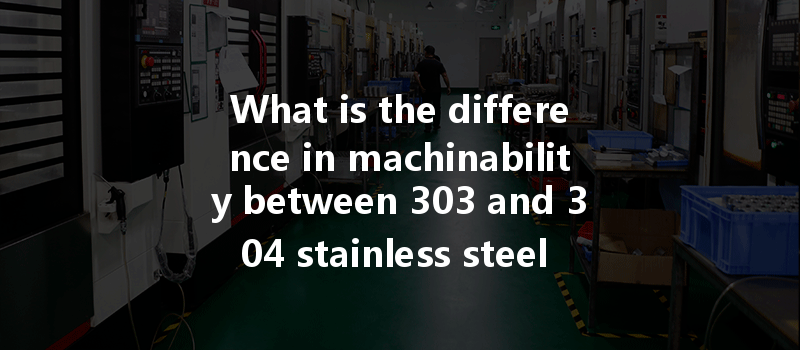Opening:
Did you know that stainless steel accounts for approximately 70% of the global demand for steel in various industries today? Within the stainless steel category, two of the most commonly used types are 303 and 304 stainless steels. These alloys have distinct properties and applications, particularly important in CNC turning—a subtractive manufacturing process vital to precision engineering. Understanding the differences in machinability between these two grades can significantly enhance production efficiency and product quality.
Content:
Before diving into the differences, it’s essential to understand what makes 303 and 304 stainless steels unique. Both are austenitic stainless steels, meaning they are non-magnetic and have excellent corrosion resistance; however, they differ in composition and properties.
2. Machinability: Definitions and Importance
Machinability refers to how easily a material can be machined—cut, shaped, or finished—by a tool. Factors influencing machinability include:
Understanding these factors is crucial for manufacturers aiming to optimize their CNC turning operations.
3.1 Cutting Speed and Feed Rate
When machinists work with 303 stainless steel, they often experience higher cutting speeds and feed rates due to its favorable chip formation and lower cutting forces. This can translate into faster cycle times and reduced overall production costs. In contrast, machining 304 may necessitate lower speeds and feed rates to mitigate tool wear and ensure surface finish quality, thus resulting in longer machining times and increased labor costs.
3.2 Tool Wear
The sulfide inclusion present in 303 stainless steel not only enhances its machinability but also extends tool life. The ability of the alloy to produce continuous chips instead of stringy ones reduces the friction and wear on cutting tools, leading to less frequent tool changes and lower operational costs.
On the other hand, machining 304 stainless steel results in a higher rate of tool wear due to its toughness and work hardening characteristics. Tools generally need more frequent sharpening or replacement, which can add significant costs to the machining process.

3.3 Surface Finish and Dimensional Accuracy
In CNC turning operations, achieving a high surface finish and maintaining dimensional accuracy is paramount. While both 303 and 304 can yield good finishes, 303 typically produces better surface finishes with fewer machine marks. This is due to its better chip management and machinability characteristics.
304 stainless steel, while often requiring additional finishing operations to achieve similar surface qualities, can provide superior corrosion resistance, making it ideal for applications where appearance is secondary to function.
Both 303 and 304 stainless steels serve distinct needs in the industry:
5.1 Tool Selection
Selecting the right tools is vital for effective machining. For 303 stainless steel, high-speed steel (HSS) or carbide tools with appropriate coatings can help capitalize on its machinability. For 304, more robust tools designed to withstand tougher conditions, such as ceramic or coated cermet tools, may be necessary to maintain efficiency and reduce wear.
5.2 Cutting Fluids
Utilization of cutting fluids can improve tool life and surface finish. While both alloys benefit from lubricants, 303 stainless steel often requires less aggressive fluids, making it cheaper and easier to manage during machining. In contrast, 304 may require specialized coolants that reduce work hardening and dissipate heat effectively.
5.3 Speed and Feed Adjustments
Machinists must adjust their speed and feed rates according to the alloy being processed. For instance, using a higher RPM with 303 can lead to more effective cutting, while starting slower with 304 prevents problems like tool wear and component distortion.
The difference in machinability between 303 and 304 stainless steel in CNC turning is a crucial consideration for manufacturers seeking efficiency and quality. Understanding the unique properties of these alloys enables better tool selection, effective cutting strategies, and ultimately leads to reduced operational costs.
As industries continue to evolve, remaining knowledgeable about material properties and machining techniques becomes even more vital. Choosing the right stainless steel for specific applications improves not only the final product quality but also influences overall production effectiveness.
In conclusion, when planning your CNC machining operations, consider the detailed comparisons presented in this blog about 303 and 304 stainless steel. Prioritizing the right alloy choice can make a significant difference in both efficiency and output. The decisions made in machining processes can not only define the success of individual components but also enhance the overall competitiveness of manufacturing operations in today’s market.
Taking the time to explore these vital topics is more than just a technical necessity—it’s a strategic investment in the future of your production capabilities.



